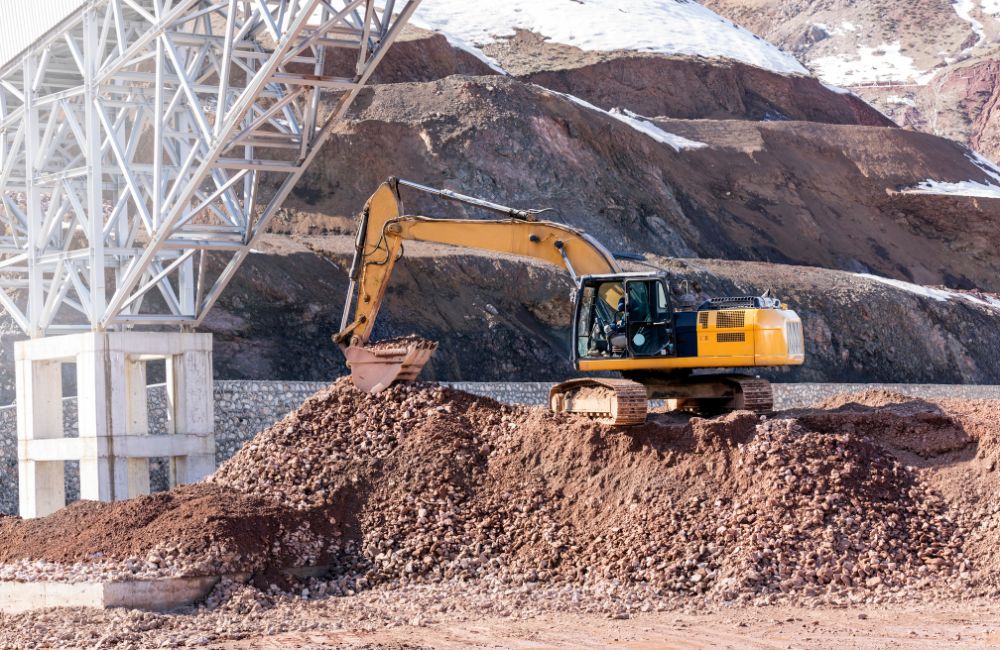Table of Contents
5 Common Types of Incidents That Require Reporting
6 Key Components of an Incident Report
5 Best Practices for Writing an Incident Report
4 Benefits of Effective Incident Reporting
Partner with Claris Design•Build for Industry-Leading Safety and Performance!
Key Takeaways✔ An incident report documents unexpected events to ensure workplace safety and accountability. ✔ Incidents requiring reports include accidents, near-misses, and safety hazards. ✔ Key elements include date, location, description, witnesses, actions taken, and evidence. ✔ Be factual, clear, and objective, and submit reports promptly. ✔ Avoid omitting details, making assumptions, or ignoring protocols. ✔ Effective reporting prevents future incidents, ensures compliance, and provides legal documentation. |
Incident reporting is a fundamental aspect of workplace safety, accountability, and risk management across various industries. Whether in healthcare, construction, or corporate environments, proper documentation of incidents ensures both transparency and compliance with safety regulations.

What Is an Incident Report?
An incident report is a formal written record that details an unexpected event, accident, or near-miss that occurred in the workplace or within an organization. These reports provide a detailed account of the incident and outline any actions taken immediately after the event.
The primary purpose of incident reports is to ensure that organizations are aware of any safety concerns, risks, or hazards and can take action to prevent future incidents. Knowing when and why to file an incident report is essential to maintain safety, avoid legal issues, and ensure that proper follow-up measures are taken.
5 Common Types of Incidents That Require Reporting
Incidents can vary greatly depending on the industry, but most common categories include:
-
Accidents
Any event that causes harm or injury to an individual, such as a slip-and-fall in a warehouse or an injury from malfunctioning equipment. In construction, approximately 40% of injuries result in days away from work, which highlights the serious impact these incidents can have on both workers and productivity.
-
Near Misses
Situations where an accident was narrowly avoided. These incidents are crucial to report because they highlight potential hazards before someone is seriously hurt.
-
Safety Hazards
Identifying unsafe conditions, such as faulty machinery, exposed wiring, or improper use of safety equipment, helps prevent accidents.
-
Medical Incidents
In healthcare settings, incidents involving patients, medication errors, or equipment failures are typically reported to ensure patient safety.
-
Environmental Hazards
Spills, leaks, or other environmental issues, such as exposure to harmful chemicals, can jeopardize workplace safety or the surrounding areas. In 2020, around
174 construction injuries were caused by harmful chemicals, emphasizing the importance of addressing these hazards promptly.
6 Key Components of an Incident Report
Writing an effective incident report involves detailing the incident in a clear, concise, and factual manner. Every report should include key components to ensure that all relevant information is captured.
-
Date, Time, and Location of the Incident
The report should specify when and where the incident occurred. This includes the exact time and date, as well as a precise description of the location within the facility or worksite.
-
Names and Roles of Individuals Involved
Every person involved in the incident, whether directly or indirectly, should be named in the report. This includes witnesses, individuals affected by the incident, and any employees who responded to the event.
-
Description of the Incident
This is the core of the report. It should provide a detailed description of what happened, including how the incident occurred and any factors that may have contributed to it. The writer should stick to factual statements and avoid making assumptions about causes or assigning blame.
-
Witness Statements
If there were any witnesses, their observations should be included in the report. Witness statements provide additional perspectives and can be valuable in investigating the incident.
-
Actions Taken in Response
Any immediate actions taken to address the incident should be documented. For example, first aid provided to an injured employee or steps taken to contain a spill. Additionally, the report should include any follow-up actions, such as investigations or changes made to safety protocols.
-
Supporting Evidence
Where applicable, the report should include any supporting evidence. This may include photographs of the scene, video footage, or copies of relevant documents.

5 Best Practices for Writing an Incident Report
Writing an incident report requires a professional approach. To ensure that the report is accurate and effective, consider the following best practices:
-
Be Factual and Objective
It is essential to report incidents as they happened, without including personal opinions or assumptions. Stick to the facts and let the investigation determine the causes or responsibility. Objectivity is key to maintaining the integrity of the report and preventing bias.
-
Use Clear and Concise Language
Reports should be easy to understand by anyone who reads them. Avoid jargon or overly technical terms unless they are necessary and widely understood within the organization. Use straightforward language and avoid long, complicated sentences.
-
Avoid Assumptions or Blame
The purpose of an incident report is not to assign fault but to document what occurred. Avoid using language that implies blame or assumptions about what led to the incident.
-
Double-Check Details for Accuracy
Before submitting the report, double-check all the details. Incorrect information, such as wrong dates or names, can complicate the investigation and lead to confusion. Accuracy is critical to ensure that the report is reliable and useful.
-
Submit the Report in a Timely Manner
Incident reports should be completed and submitted as soon as possible after the event occurs. Waiting too long to document the incident can lead to forgotten details and less accurate reporting. Timely submission ensures that follow-up actions can be taken promptly.
4 Common Mistakes to Avoid
Even with the best intentions, it’s easy to make mistakes when writing an incident report. Avoiding these common pitfalls can help ensure that the report is comprehensive and effective.
-
Leaving Out Important Details
One of the most common mistakes is failing to include critical details. Omitting important information, such as witness names or specific actions taken after the incident, can hinder the organization’s ability to respond appropriately.
-
Making Assumptions
Assuming the cause of an incident or making guesses about why it happened can lead to inaccurate reporting. It is crucial to stick to the facts and allow investigations to uncover the causes.
-
Using Unclear or Technical Language
Overly technical or unclear language can confuse the reader and make the report less useful. Ensure that the language is straightforward and accessible to all relevant parties.
-
Failing to Follow Protocol
Most organizations have specific procedures for incident reporting. Not following these protocols can result in incomplete reports or failure to address key safety concerns. Always be sure to follow the established guidelines.
4 Benefits of Effective Incident Reporting
The importance of incident reports cannot be overstated. They provide numerous benefits to organizations and their employees.
-
Ensuring Accountability and Transparency
Incident reports hold individuals and organizations accountable by creating a formal record of events. This promotes transparency and ensures that issues are addressed openly and responsibly.
-
Helping Prevent Future Incidents
By documenting and analyzing incidents, organizations can identify trends, recurring hazards, or problem areas that need attention. Incident reports are a proactive tool for preventing future accidents.
-
Enhancing Workplace Safety and Compliance
Effective reporting is essential for maintaining workplace safety and ensuring compliance with safety regulations and standards. Organizations can use incident reports to demonstrate their commitment to employee welfare and regulatory compliance.
-
Providing Documentation for Legal or Insurance Purposes
Incident reports are invaluable when it comes to legal disputes or insurance claims. A well-documented report can provide critical evidence to support claims, protect the organization from liability, and ensure that proper compensation is provided when necessary.
Frequently Asked Questions
What are the consequences of not filing an incident report?
Failing to file an incident report can lead to significant legal, financial, and operational consequences. It may result in non-compliance with safety regulations, which can lead to fines or penalties from regulatory bodies. If a worker's injury goes unreported, the company could face lawsuits or higher insurance premiums. Additionally, neglecting to report incidents hinders the company’s ability to prevent future accidents, increasing the risk of further incidents.
Are incident reports confidential?
Incident reports are usually treated as confidential documents within the organization. They are shared only with relevant personnel, such as safety officers, site managers, and sometimes insurance companies. However, in the case of serious incidents or legal proceedings, reports may need to be disclosed to regulatory authorities or courts.
Can incident reports be used in legal proceedings?
Incident reports can be used as evidence in legal proceedings, especially in cases involving personal injury or property damage. They provide a factual record of the incident, which can help clarify events and establish liability. It’s important that reports are completed accurately and impartially to avoid legal complications. In some cases, failing to file a report can be used against a company in court.
What happens after an incident report is filed?
After filing, the incident report is typically reviewed by the site safety officer or management team. An investigation is often conducted to determine the root cause of the incident and to identify any contributing factors. Based on the findings, corrective actions may be implemented, such as additional training, changes to safety protocols, or equipment upgrades.
Who is responsible for filing an incident report?
Typically, the site supervisor or safety officer is responsible for ensuring that an incident report is completed after an event occurs. However, the worker involved in the incident or a witness may also be required to contribute information. It's important for everyone on-site to be aware of the reporting procedures and understand their role.
Partner with Claris Design•Build for Industry-Leading Safety and Performance!
Claris Design•Build offers more than just exceptional design and construction services — we prioritize safety at every step. With an impressive Insurance Safety Modification rate of 0.87, one of the best in the industry, our commitment to safety goes beyond standards. Many firms talk about safety, but at Claris, we live it. Let us help protect your projects and your people with our dedicated, safety-first approach to construction. Trust Claris Design•Build to deliver top-tier results with unmatched safety performance.






![[2025 UPDATE] Commercial Construction Cost per Square Foot in the US](https://www.clarisdesignbuild.com/wp-content/uploads/2025/04/2025-UPDATE-Commercial-Construction-Cost-per-Square-Foot-in-the-US-3.jpg)



